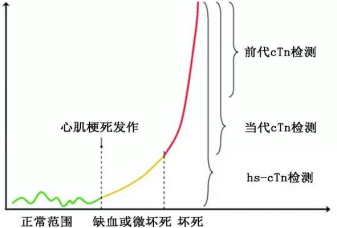Research methodology
1. Participants included patients who received an emergency department visit (April 30, 2018 to April 23, 2019) and underwent troponin testing in 21 Queensland Health hospitals (QH).
2. Pre-implementation phase (prior to the use of hs-cTn): 63,335 cases using the AccuTnI+3 assay with a 99th percentile Upper Reference Limit (URL) of 40 ng/L, with a recommended cTn sampling interval of 6 to 8 hours for most patients (after an office visit for initial testing), and an IMPACT process (which allows for 0 h and 2/3 h sampling in moderate- and low-risk patients) for some patients.
3. post-intervention phase (after hs-cTn use): 61,022 cases using the Access hs-cTnI assay (from October 25, 2018 onwards. Data within two weeks of hs-cTnI use were not used because some hospitals used AccuTnI+3 and hs-cTnI in parallel during this period) using a gender-specific upper reference limit of 10 ng/L for women and 20 ng/L for men.Sampling intervals of 0 h and 2/3 h were used for all patients.
Findings
Result 1: Median hospital LOS was 11.1 h (IQR 5.0–45.4) in the pre-intervention and 9.1 h (IQR = 5.1 to
43.7 h) in the post-intervention period; a reduction of 1.9 h (95% CI: 2.9 to 1.0 h).
Result 2: Death from a CV cause (up to 90 days after presentation) occurred in 513/54,600 (0.9%)pre-implementation patients and 333/52,310 (0.6%) post-implementation patients; a reduction of0.3% (95% Cl: -0.4 to -0.2). Death from a CV cause occurred in 219(0.8%) females pre- and 140 (0.5%) post-implementation. For males, CV deaths occurred in 294 (1.1%)
patients pre- and 193 (0.7%) patient's post-implementation.

Discussion
In patients with suspected ACS, the use of more accurate hs-cTnI reduced hospital LOS without an increase in cardiovascular hospitalizations, invasive treatments, or diagnosis of AMI. Current research supports the growing popularity of hs-cTnI testing worldwide. Highly sensitive cTnI assays allow for more rapid evaluation protocols within the emergency department, resulting in medical diagnostic and societal value[3].